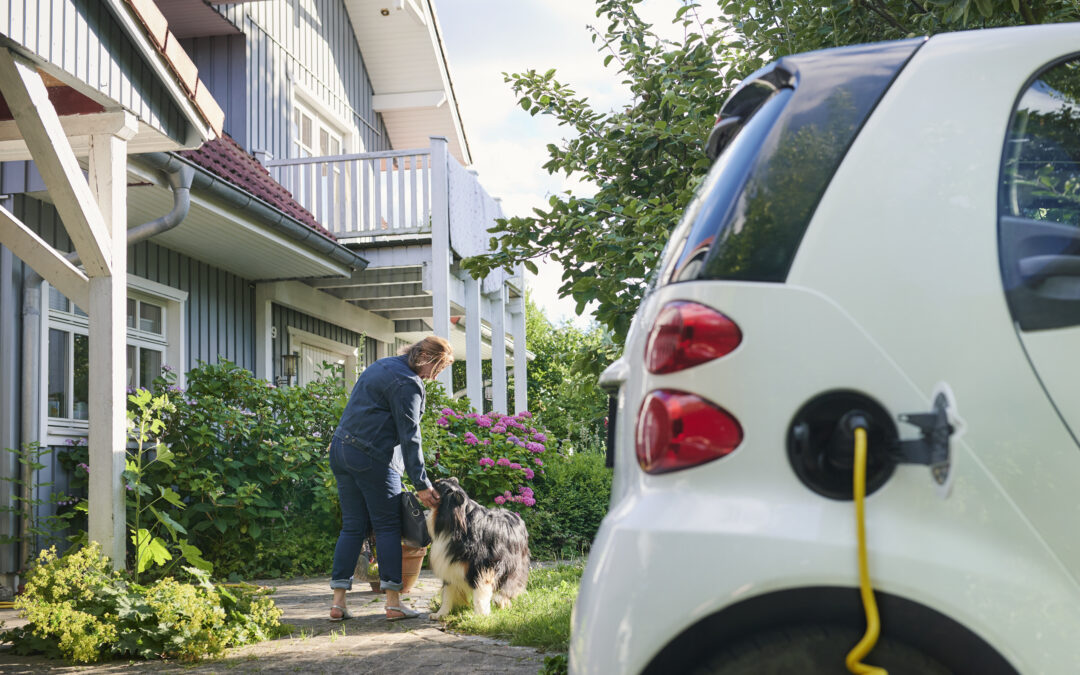Community associations need to prepare for electric vehicles as more drivers bring them home and expect to plug in. Board members and managers can plan to either provide charging stations as an amenity or offer residents guidelines to install their own.
In attempts to make charging accessibility at home easier, some states and cities, including Illinois, Florida, Colorado, and New York, have enacted “right to charge” laws. These laws require new homes to be built with wiring for EV charging and aim to make EV charging more affordable and accessible, according to Fast Company.
Kevin Kostiner, head of business development and partnerships for electric vehicle charging solutions provider EverCharge, helped present a session at the 2023 CAI Annual Conference and Exposition: Community NOW: “Charge Forward: Implementing an EV Charging Strategy for Your Community.” He shares three important criteria that community associations should consider when implementing EV charging.
ELECTRICAL CAPACITY
How much energy are your homes already using? How much are they capable of? Is your system capable of taking on EV charging as is, or will any updates need to be made to your infrastructure before owners plug in? If updates are needed, how will they be paid for? Getting these questions answered in advance of charging station implementation can prevent a lot of headaches.
PARKING SPACES
Is your parking deeded or assigned? If the parking is deeded, an association cannot legally deny the right of a unit owner to install the charger in their own parking spot. However, communities can set rules and regulations for the installation to make sure it’s fair for all. They also may have room to add a few assigned plug-in spots for EVs. If the parking is assigned, the association has the right to determine where chargers are implemented, how they are financed and maintained, and how residents can use them.
Kostiner recommends that associations speak with as many as three qualified, expert EV charging providers who are leading in the area to help explain pricing and limitations. As EV technology continues to develop, new hardware and software will likely be required; a good provider should be committed to staying up to date and scaling with your community.
PLANNING
You need an organized EV charging strategy, but you don’t need to overcomplicate the implementation plan to plug in. Keeping it simple will prevent conflict between the association and residents. “You want to find a solution that fits the bill for your community, but you need to do so in a timely manner,” Kostiner says.
Before installing charging stations in your community, it is also important to review your governing documents to determine whether you have the authority to make those changes, and to consider the best options for financing, servicing, and administering stations.
By following the necessary steps and partnering with the right provider, your community will be well on its way to a charged future.
>>Find the latest legislative updates on EV charging in community associations and review CAI’s plug-in public policy.
Webinar: Shock to the System Part II
July 26
What can your community association expect from the increased demand for electric vehicle chargers? Legal, insurance, and community management experts will help us take a closer look after the overwhelming response and number of questions during our webinar in April. This month, our panel of experts will cover:
- Steps to facilitating the installation of chargers and guidelines for use.
- Legal ramifications and the intersection of local and federal guidelines.
- Logistical challenges and financial impacts.
- Safety and insurance considerations.


